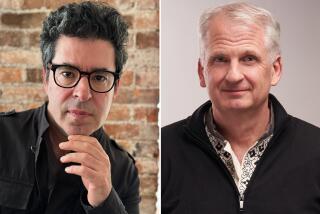IT’S A FREE COUNTRY: Personal Freedom in...
IT’S A FREE COUNTRY: Personal Freedom in America After September 11
Edited by Danny Goldberg, Victor Goldberg and Robert Greenwald
RDV Books/N.Y.: 372 pp., $19.95
“The fundamental fear expressed in this book,” writes Cornel West in the foreword to “It’s a Free Country,” “is that the present American obsession with safety may undermine freedom, that security could trump liberty, that democracy might be lost in the name of declaring war on terrorism.” In the immediate aftermath of Sept. 11, there was enormous resistance, born of fear, to hearing the concerns expressed in this volume. The first casualty of war is reason, writes Ramona Ripston in her essay. A year has passed, and perhaps now these voices can be heard.
The book’s first section on the history of the democracy-security debate illuminates how fundamental this issue is to the definition of democracy. Ira Glasser takes us back to Alexander Hamilton, who worried in 1787 when the Constitution was being framed that to be “more safe” would involve being “less free.” Glasser walks us through the many points in American history when war has been used as an opportunity for the expansion of government power: the 1787 Alien and Sedition Acts, the 1917 Espionage Act, the 1941 internment of Japanese Americans, McCarthyism in the 1950s, the Patriot Act of 2000; each more embarrassing than the last, each a black spot in American history, recognized in retrospect (except, of course, for the most recent one) as an infringement on democracy.
The book is most useful when it is most specific; many of the essays are repetitive grandstanding. Some write that the threats to our civil liberties are exaggerated, others that the threat to our security has been exaggerated. Relief from the feeling of immediate danger comes in the form of rare satire, like Michael Moore’s letters to President Bush, or in the cartoons of Matt Groening and the poetry of Ani DiFranco.
*
TOTAL FEARS
By Bohumil Hrabal
Translated from the Czech
by James Naughton
Twisted Spoon Press/Prague:
206 pp., $13.50
These essays, in the form of letters to an American student, April Gifford, nicknamed Dubenka, are Bohumil Hrabal at his most ecstatic, in the sense of almost religious fervor, full of the “mystic vision” of Eastern European writers. They are his dark night of the soul, his “Wasteland.” Written from 1989 to 1992 (when Hrabal was 75), they are the sum of his fear and his shame. Fear born in utero when his grandfather pretended to shoot Hrabal’s pregnant mother just to teach her a lesson; fear that lasted through his life of many revolutions, uprisings and his own persecution by Nazis and the secret police during Alexander Dubcek’s government. Shame at being a writer; shame for being afraid and playing along with the secret police; shame at being enthralled with the “Delighted States” when his country was in upheaval in 1968 and again in the late 1980s.
Asked by a Danish journalist why he never emigrated, Hrabal, who died in 1997, replies, “I emigrated inwardly ... to the pub.” These are terribly intimate letters, in which he described the many “invisible threads” drawing him toward death and binding him to the already dead: his wife, Kafka, T.S. Eliot, even Shakespeare. He writes from his house in Kersko, where he lives with his cats. He sees the demonstrations in Prague on TV: “I’m sniffling--I see it, this beauty of Prague, these lovely girls, these young men, students, stepping out all proud and solemn about how fate is not passing them by, but moving with them and through them.”
*
TOOTHPICKS & LOGOS
Design in Everyday Life
By John Heskett
Oxford University Press:
214 pp., $24
Books on design are often difficult to read, the general rule being that the simpler the concepts, the greater the jargon. John Heskett avoids this, mercifully, for he is covering a wide territory: changes in the modernist dictum, “form follows function,” the effects of mass manufacturing on design, global design as the embodiment of cultural values, the effects of technology on design and the role of designers.
Heskett’s examples are particularly delightful. Take, for instance, the mass-produced Japanese toothpick, beveled at one end so that it can be broken easily; the used end sits on top of the broken piece so that it does not touch the table, embodying Japanese values of cleanliness and aesthetics of the table.
In the end, Heskett saves one of the greatest design gaffes of all time for last, an effective argument for designers that act as more than technocrats: the 2000 U.S. presidential ballot.
More to Read
Sign up for our Book Club newsletter
Get the latest news, events and more from the Los Angeles Times Book Club, and help us get L.A. reading and talking.
You may occasionally receive promotional content from the Los Angeles Times.







